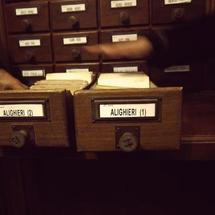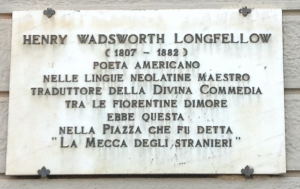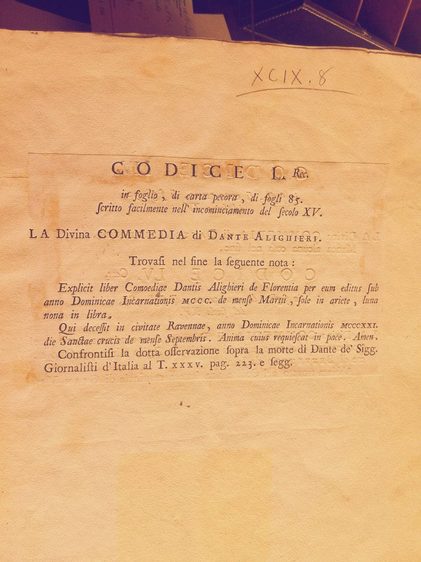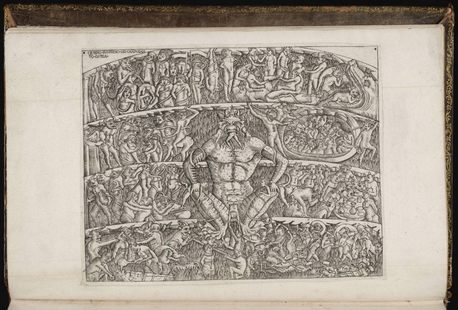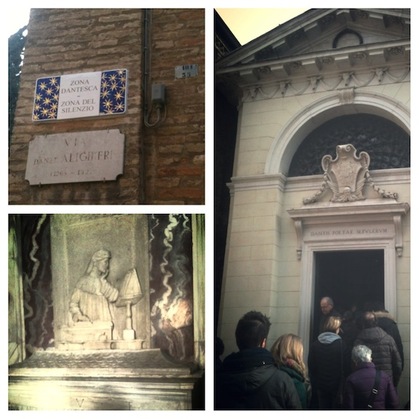Dan Brown has already referenced Dante and his Inferno.
“Although I studied Dante’s Inferno in high school, it wasn’t until recently, while researching in Florence, that I came to appreciate the enduring influence of Dante’s work on the modern world. With this new novel, I am excited to take readers on a journey deep into this mysterious realm… a landscape of codes, symbols, and more than a few secret passageways.”
Scholars have spent lifetimes on this writer and the old card catalog of the Italian National Library contains two draws of references to works by and about him. What is the casual reader to do, especially one who has access to Dante only in translation, not in the original Italian?
Dante’s image also appears in one the Facebook page, and it will adorn the dustcover of the US version of the original publication.
In the digital age one might begin with either The Digital Dante Project, or the World of Dante, a multimedia project for interested readers and scholars alike. Dan Brown actually mentions the two sites above along with the Princeton Dante Project in his acknowledgements. Or one might read a book, such as R.W.B. Lewis’ Dante. One of my goals is to have done the research and made the connections between Brown’s fiction and the facts. Until the novel appears all is pure speculation. But a few basics to keep in mind are likely essential.
Durante degli Alighieri, Dante (c. 1265–1321), known as il Sommo Poeta (“the Supreme Poet”) is the author of The Divine Comedy, originally called Commedia.
Born in Florence, this poet and politician, was exiled from his beloved birthplace in 1301. Eventually he made his way to Ravenna where he died and was buried in 1321. Best known for his Commedia (only in the classical sense that there was a happy ending), Dante also gave life in his work to his unrequited youthful love for Beatrice Portinari in “The New Life.” While Dante is buried in Ravenna, there is an empty tomb for him in the Basilica of Santa Croce, Florence.
As complex as Dante, the poet and man is, so too is his seminal work that successively takes the reader along with the poet and his guide, the poet Virgil, to the underworld of the Inferno, then Purgatory and finally Paradise, where the guide is now his long lost love, Beatrice. The work can be read on many levels, but perhaps the most extraordinary one is the mellifluous sound of Dante’s Italian, (listen here) that can be imitated but not replicated in another language such as English. (Although T.S. Eliot may have tried in his own Cantos.) Hell or Inferno is the first of the three parts of the 100 Canto Commedia. Each section contains thirty three cantos (if Canto I is considered an introduction). Brown has at least preliminarily highlighted only this first of the three books.
Relegated to translations the English reader will have choices, some where there is an attempt to render the poetry and rhyme, others that seek the more literal meaning.
The following quotes on Facebook accompanied one of the images depicting Dante’s Inferno on 2/25/13.
From the old bridge we looked down at the ranks
of those approaching from the other side;
they too were driven onward by the lash.
Del vecchio ponte guardavam la traccia
che venìa verso noi da l’altra banda,
e che la ferza similmente scaccia.
This is from Canto 18: 81-83 in the translation by Allen Mandelbaum. While there are several translations and annotated editions in English, the one by Mandelbaum should be a starting point, for it presumably is the one used by Brown or his webpage editors.
As complex as Dante, the poet and man is, so too is his seminal work that successively takes the reader along with the poet and his guide, the poet Virgil, to the underworld of the Inferno, then Purgatory and finally Paradise, where the guide is now his long lost love, Beatrice. The work can be read on many levels, but perhaps the most extraordinary one is the mellifluous sound of Dante’s Italian, (listen here) that can be imitated but not replicated in another language such as English. (Although T.S. Eliot may have tried in his own Cantos.)
Brown is not the first English language writer to be fascinated by Dante and the Divine Comedy. The Harvard professor and poet, Henry Wadsworth Longfellow, did a still quoted translation of The Divine Comedy. A plaque in his honor can be seen in Florence.
Another Harvard connection is T.S. Eliot who graduated from Harvard and went on to teach and write as did Brown. His fascination with Dante is well documented. Robert Penn Warren, professor, poet, novelist and critic also pays homage to Dante in his novel, A Place to Come To.
As the hints began again, Brown’s Facebook page offered this page from The Divine Comedy.
As the publication date approached this quote and picture from Canto 34 appeared:
“If he was once as handsome as he now is ugly and, despite that, raised his brows against his Maker, one can understand how every sorrow has its source in him! I marveled when I saw that, on his head, he had three faces: one-in front-bloodred”
Dante is not buried in Florence, but rather in Ravenna where he died. Claire Jensen put together this look. There is, however, an empty crypt for Dante in the Florence Basilica of Santa Croce.
